Okarito Lagoon is one of the hidden gems of Westland National Park and our one hour sightseeing tour with Okarito Boat Tours was a real delight. We left from the historic wharf, built in 1875. With limited road access back in those days, Okarito became the supply centre for the district, and local flax mills exported their wares direct to Australia.
Our guide Swade, dark, dashing and oh so knowledgeable took us out on his modified flat bottom boat. First things first – on came the life jackets. As the six of us were the only ones aboard, we had plenty of room to spread out for a good vantage spot each.
The lagoon covers a vast 3000ha of shallow open water and tidal flats, and is the largest unmodified wetland area in New Zealand. Our route through the lagoon was dictated by the manuka markers which showed the way through the tidal channel. The large swathe of something which looked like soapsuds on top of the water turned out to be tannin foam, washed down from the hills and churned up by the tidal flow.
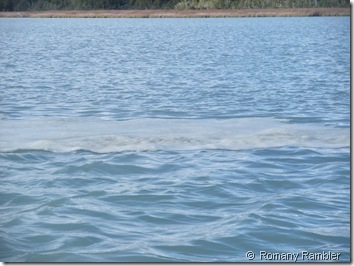 Tannin foam on top of the water
Tannin foam on top of the water
Trees washed down the river to the coast during storms become stuck fast in the bottom of the lagoon and make handy perches for the large variety of water birds which feed here – with over 70 species being identified.
Gliding into the Okarito Chanel we were thrilled to see one white heron after another, gathered to feed off the spawning whitebait. One or two were on the water edge, while others were perched up on top of trees.
The birds sat still as we quietly glided past, and we were delighted to see one take flight as he moved from one tree to another.
The herons were definitely the highlight of our trip, and Swade was kept busy pointing out plenty of other species as well. We saw several different shags, Caspian terns and white fronted terns. The lagoon is also stocked well stocked with salmon and trout, and the locals come and try their luck for these tasty fish. What a magical place this was, gliding peacefully across the beautiful lagoon surrounded by rain forest, and we caught a glimpse of Mt Cook peeping through the clouds.
Okarito village was quite a charming little place and we took a stroll around. New modern houses were side by side with old original cottages from yesteryear.
The Air New Zealand Environmental Trust are keen to help protect this wetland area and have pledged half a million dollars for plant restoration. There is a plant nursery set up in the village to propagate the different species of native plants and trees for this project.
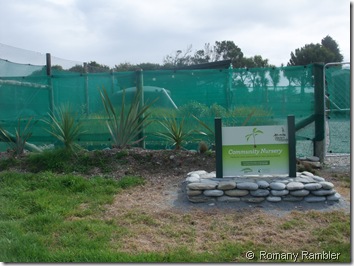
We came across a large monument – another war memorial we thought. But no, this monument relates the important historical dates and happenings of the area. Such as the fact that Able Tasman navigated the West Coast in 1642 and Captain James Cook sailed this coast in 1770, and James Mackey purchased this land from the Maori in 1860. The monument also pays homage to the courage and perseverance of the West Coast settlers.
This is a delightful little spot and we can certainly recommend a visit here. We relate these words which adorn the walls in the local cafe. “Thank you for finding us. Please share the secret of Okarito, but only tell the worthy!”
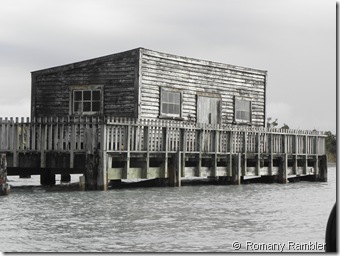
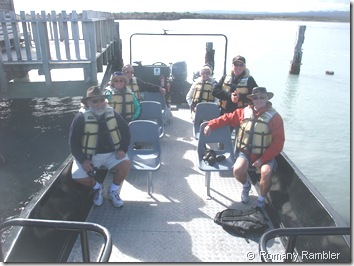
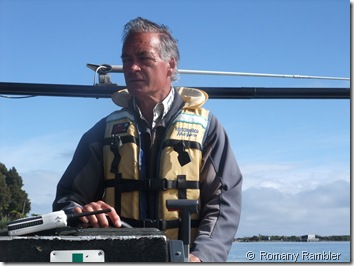
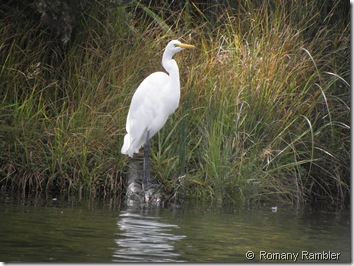
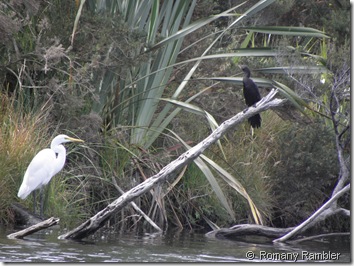
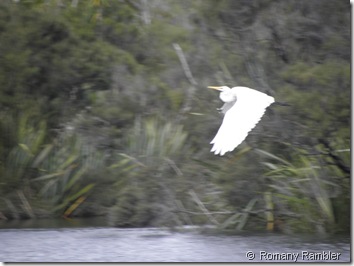
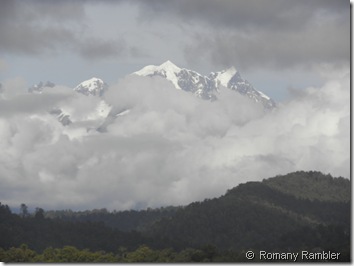
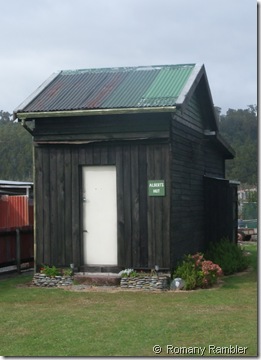
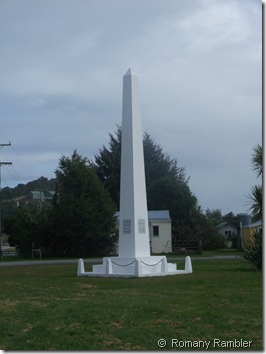
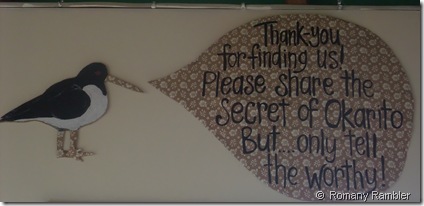
No comments:
Post a Comment